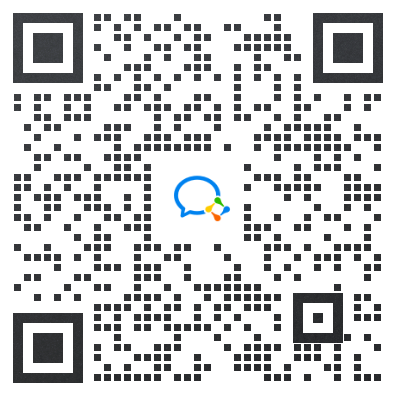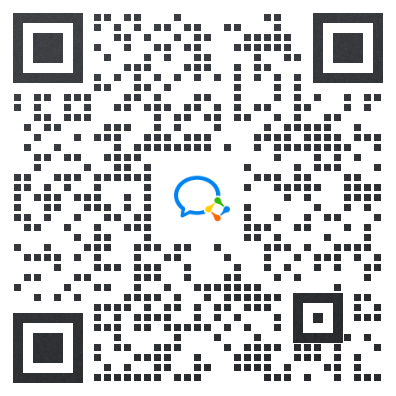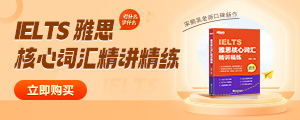
雅思免费课程NEW
剑桥题库机考HOT
雅思水平测试NEW
雅思选课中心
雅思听力
雅思口语
雅思阅读
雅思写作
雅思问答
雅思考试机经回忆
雅思动态NEW
雅思备考指导
雅思模拟题
雅思核心词汇NEW

雅思备考规划
扫码添加助教免费咨询雅思备考规划

扫码关注回复雅思获取最新雅思口语题库和备考资料
新东方在线雅思网第一时给大家带来了雅思阅读练习题:纸张和电脑。希望以下内容能够为同学们的雅思备考提供帮助。新东方在线雅思网将第一时间为大家发布最新、最全、最专业的雅思报名官网消息和雅思考试真题及解析,供大家参考。
Paper or Computer?
A Computer technology was supposed to replace paper. But that hasn't happened. Every country in the Western world uses more paper today, on a per-capita basis, than it did ten years ago. The consumption of uncoated free-sheet paper, for instance — the most common kind of office paper — rose almost fifteen per cent in the United States between 1995 and 2000 This is generally taken as evidence of how hard it is to eradicate old, wasteful habits and of how stubbornly resistant we are to the efficiencies offered by computerization. A number of cognitive psychologists and ergonomics experts, however, don't agree Paper has persisted, they argue, for very good reasons: when it comes to performing certain kinds of cognitive tasks, paper has many advantages over computers The dismay people feel at the sight of a messy desk — or the spectacle of air-traffic controllers tracking fj through notes scribbled on paper strips — arises from a fundamental confusion about the role that paper plays in our lives.
B The case for paper is mode most eloquently in "The Myth of the Paperless Office", by two social scientists. Abigail Sellen and Richard Harper. They begin their book with an account of a study they conducted at the International Monetary Fund, in Washington. D.C. Economists at the I.M.F. spend most of their time writing reports on complicated economic questions, work that would seem to be perfectly suited to sitting in front of a computer. Nonetheless, the I.M.F. is awash in paper, and Sellen and Harper wanted to find out why. Their answer is that the business of reports — at least at the I M F. — is an intensely collaborative process, the professional judgments and contributions of many people. The economists bring drafts of reports to conference rooms, spread out the relevant pages, and negotiate changes with one other. They go back to their offices and jot down comments in the margin, taking advantage of the freedom offered by the informality of the handwritten note. Then they deliver the annotated draft to the author in person, taking him, page by page, through the suggested changes. At the end of the process, the author spreads out all the pages with comments on his desk and starts to enter them on the computer — moving the pages around as he works, organizing and reorganizing, saving and discarding.
C Without paper, this kind of collaborative and iterative work process would be much more difficult. According to Sellen and Harper, paper has a unique set of "affordances" — that is, qualities that permit specific kinds of uses. Paper is tangible: we can pick up a document, flip through it, read little bits here and there, and quickly get a sense of it. Paper is spatially flexible, meaning that we can spread it out and arrange it in the way that suits us best. And it's tailorable: we can easily annotate it, and scribble on it as we read, without altering the original text. Digital documents, of course, have their own affordances. They can be easily searched, shared, stored, remotely, and linked to other relevant material. But they lack the affordances that really matter to a group of people working together on a report. Sellen and Harper write:
D Paper enables a certain kind of thinking. Picture, for instance, the top of your desk. Chances are that you have a keyboard and a computer screen off to one side, and a clear space roughly eighteen inches square in front of your chair. What covers the rest of the desktop is probably piles — piles of papers, journals, magazines, binders, postcards, videotapes, and all the other artifacts of the knowledge economy. The piles look like o mess, but they aren't. When a group at Apple Computer studied piling behavior several years ago, they found that even the most disorderly piles usually make perfect sense to the piles, and that office workers could hold forth in great detail about the precise history and meaning of their piles. The pile closest to the cleared, eighteen-inch-square working area, for example, generally represents the most business, and within that pile the most important document of all is likely to be at the top. Piles are living, breathing archives. Over time, they get broken down and resorted, sometimes chronologically and sometimes thematically and sometimes chronologically and thematically; clues about certain documents may be physically embedded in the file by, say, stacking a certain piece of paper at an angle or inserting dividers into the stack.
E But why do we pile documents instead of filing them? Because piles represent the process of active, ongoing thinking. The psychologist Alison Kidd, whose research Sellen and Harper refer to extensively, argues that "knowledge workers" use the physical space of the desktop to hold "ideas which they cannot yet categorize or even decide how they might use" The messy desk is not necessarily a sign of disorganization. It may be a sign of complexity: those who deal with many unresolved ideas simultaneously cannot sort and file the papers on their desks, because they haven't yet sorted and filed the ideas in their head. Kidd writes that many of the people she talked to use the papers on their desks as contextual cues to "recover a complex set of threads without difficulty and delay" when they come in on a Monday morning, or after their work has been interrupted by a phone call. What we see when we look at the piles on our desks is, in a sense, the contents of our brains.
F This idea that paper facilitates a highly specialized cognitive and social process is a far cry from the way we have historically thought about the stuff. Paper first began to proliferate in the workplace in the late nineteenth century as part of the move toward "systematic management." To cope with the complexity of the industrial economy, managers were instituting company-wide policies and demanding monthly, weekly, or even daily updates from their subordinates. Thus was born the monthly sales report, and the office manual and the internal company newsletter. The typewriter took off in the eighteen-eighties, making it possible to create documents in a fraction of the time it had previously taken, and that was followed closely by the advent of carbon paper, which meant that a typist could create ten copies of that document simultaneously. Paper was important not to facilitate creative collaboration and thought but as an instrument of control.
Questions 27-32
The reading passage has seven paragraphs, A-G
Choose the correct heading for paragraphs A-G from the list below.
Write the correct number, i-x. in boxes 27-32 on your answer sheet.
List of Headings
i. paper continued as a sharing or managing must
ii. piles can be more inspiring rather than disorgansing
iii. Favorable situation that economists used paper pages
iv. overview of an unexpected situation: paper survived
v. comparison between efficiencies for using paper and using computer
vi. IMF' paperless office seemed to be a waste of papers
vii. example of failure for avoidance of paper record
viii. There are advantages of using a paper in offices
ix. piles reflect certain characteristics in people' s thought
x. joy of having the paper square in front of computer
1. Paragraph A
2. Paragraph B
3. Paragraph C
4. Paragraph D
5. Paragraph E
6. Paragraph G
Questions 33-36 Summary
Complete the following summary of the paragraphs of Reading Passage, using no more than three words from the Reading Passage for each answer. Write your answers in boxes 33-36 on your answer sheet.
Compared with digital documents, paper has several advantages. First it allows clerks to work in a____33____way among colleagues. Next, paper is not like virtual digital versions, it's____34____. Finally, because it is____35____note or comments can be effortlessly added as related information. However, shortcoming comes at the absence of convenience on task which is for a____36____.
Question 37-40
Choose the correct letter, A, B, C or D
Write your answer in boxes 37-40 on your answer sheet.
37 What do the economists from IMF say that their way of writing documents?
A they note down their comments for freedom on the drafts
B they finish all writing individually
C they share ideas on before electronic version was made
D they use electronic version fully
38 What is the implication of the "Piles" mentioned in the passage?
A they have underlying orders
B they are necessarily a mess
C they are in time sequence order
D they are in alphabetic order
39 What does the manager believe in sophisticated economy?
A recorded paper can be as management tool
B carbon paper should be compulsory
C Teamwork is the most important
D monthly report is the best way
40 According to the end of this passage, what is the reason why paper is not replaced by electronic vision?
A paper is inexpensive to buy
B it contributed to management theories in western countries
C people need time for changing their old habit
D it is collaborative and functional for tasks implement and management
本文关键字: 雅思阅读

 资料下载
资料下载
雅思写作高频词汇PDF下载
发布时间:2023-08-26添加新东方在线雅思助教号
回复【200】获取
590组雅思阅读写作必背短语PDF版下载
发布时间:2023-08-09添加新东方在线雅思助教号
回复【590】获取
雅思学术词汇搭配表PDF版下载
发布时间:2023-08-04添加新东方在线雅思助教号
回复【ACL】获取
雅思口语part3结构策略PDF版下载
发布时间:2023-08-04添加新东方在线雅思助教号
回复【Part3】获取
雅思听力高频场景词PDF版下载
发布时间:2023-08-09添加新东方在线雅思助教号
回复【高频词】获取
雅思口语Part2答案示范15篇PDF下载
发布时间:2023-07-26添加新东方在线雅思助教号
回复【P2】获取
雅思小作文35组必备表达PDF下载
发布时间:2023-07-26添加新东方在线雅思助教号
回复【35】获取
雅思阅读高频短语PDF下载
发布时间:2023-07-20添加新东方在线雅思助教号
回复【短语】获取
200组雅思写作高频词汇PDF下载
发布时间:2023-07-20添加新东方在线雅思助教号
回复【200】获取
雅思写作话题词汇PDF下载
发布时间:2023-07-16添加新东方在线雅思助教号
回复【话题】获取
50组雅思口语同义替换词PDF下载
发布时间:2023-07-10添加新东方在线雅思助教号
回复【替换】获取
雅思写作大作文精选题目101PDF下载
发布时间:2023-07-09添加新东方在线雅思助教号
回复【101】获取
雅思口语核心300词PDF下载
发布时间:2023-06-23添加新东方在线雅思助教号
回复【300】获取
雅思阅读分类词汇PDF下载
发布时间:2023-06-17添加新东方在线雅思助教号
回复【分类词】获取
雅思口语必备习语PDF下载
发布时间:2023-06-17添加新东方在线雅思助教号
回复【习语】获取
雅思小作文常用词汇66词PDF下载
发布时间:2023-06-16添加新东方在线雅思助教号
回复【66】获取
雅思口语常见功能结构109句PDF下载
发布时间:2023-06-08添加新东方在线雅思助教号
回复【109】获取
10年雅思写作题库PDF下载
发布时间:2023-06-08添加新东方在线雅思助教号
回复【写作话题】获取
雅思图表作文精选套句50句PDF下载
发布时间:2023-05-28添加新东方在线雅思助教号
回复【50】获取
雅思写作99组高频词汇PDF资料
发布时间:2023-05-28添加新东方在线雅思助教号
回复【99】获取
2023年5月雅思口语新题题库PDF版本
发布时间:2023-05-14添加新东方在线雅思助教号
回复【新题】获取
2023年5-8月雅思口语新题题库与解析PDF版本
发布时间:2023-05-06关注新东方在线考雅课程中心服务号
回复【新题】获取
雅思听力考点词汇PDF资料
发布时间:2023-04-27添加新东方在线雅思助教号
回复【考点词】获取
雅思听力机经词汇PDF资料
发布时间:2023-04-24添加新东方在线雅思助教号
回复【TL】获取
雅思口语Part1常见话题语料库PDF资料
发布时间:2023-04-20添加新东方在线雅思助教号
回复【Part1】获取
剑桥雅思阅读长难句50句PDF资料
发布时间:2023-04-19添加新东方在线雅思助教号
回复【长难句】获取
雅思阅读核心学术词汇表PDF资料
发布时间:2023-04-07关注新东方在线考雅课程中心服务号
回复【核心】获取
100个雅思写作观点词和替换词表达PDF资料
发布时间:2023-03-24关注新东方在线考雅课程中心服务号
回复【100】获取
雅思阅读分类词汇PDF资料
发布时间:2023-03-22关注新东方在线考雅课程中心服务号
回复【分类词】获取
雅思阅读短语PDF资料
发布时间:2023-03-08关注新东方在线考雅课程中心服务号
回复【短语】获取

添加新东方在线雅思助教,
回复【口语】获取雅思口语资料大礼包

 推荐阅读
推荐阅读
很多考鸭在备考过程中会想去寻找一些原文资料,想要轻松有效地提升自己的雅思水平,这是非常不错的做法! 本文主要为大家介绍实用的英文书籍,希望对大家的雅思备考有所帮助。
很多考鸭在备考过程中会想去寻找一些原文资料,想要轻松有效地提升自己的雅思水平,这是非常不错的做法! 本文主要为大家介绍实用的英文书籍,希望对大家的雅思备考有所帮助。
很多考鸭在备考过程中会想去寻找一些原文资料,想要轻松有效地提升自己的雅思水平,这是非常不错的做法! 本文主要为大家介绍实用的英文书籍,希望对大家的雅思备考有所帮助。
很多考鸭在备考过程中会想去寻找一些原文资料,想要轻松有效地提升自己的雅思水平,这是非常不错的做法! 本文主要为大家介绍实用的英文书籍,希望对大家的雅思备考有所帮助。
很多考鸭在备考过程中会想去寻找一些原文资料,想要轻松有效地提升自己的雅思水平,这是非常不错的做法! 本文主要为大家介绍实用的英文书籍,希望对大家的雅思备考有所帮助。





 资料下载
资料下载
添加新东方在线雅思助教号
回复【200】获取
添加新东方在线雅思助教号
回复【590】获取
添加新东方在线雅思助教号
回复【ACL】获取
添加新东方在线雅思助教号
回复【Part3】获取
添加新东方在线雅思助教号
回复【高频词】获取
添加新东方在线雅思助教号
回复【P2】获取
添加新东方在线雅思助教号
回复【35】获取
添加新东方在线雅思助教号
回复【短语】获取
添加新东方在线雅思助教号
回复【200】获取
添加新东方在线雅思助教号
回复【话题】获取
添加新东方在线雅思助教号
回复【替换】获取
添加新东方在线雅思助教号
回复【101】获取
添加新东方在线雅思助教号
回复【300】获取
添加新东方在线雅思助教号
回复【分类词】获取
添加新东方在线雅思助教号
回复【习语】获取
添加新东方在线雅思助教号
回复【66】获取
添加新东方在线雅思助教号
回复【109】获取
添加新东方在线雅思助教号
回复【写作话题】获取
添加新东方在线雅思助教号
回复【50】获取
添加新东方在线雅思助教号
回复【99】获取
添加新东方在线雅思助教号
回复【新题】获取
关注新东方在线考雅课程中心服务号
回复【新题】获取
添加新东方在线雅思助教号
回复【考点词】获取
添加新东方在线雅思助教号
回复【TL】获取
添加新东方在线雅思助教号
回复【Part1】获取
添加新东方在线雅思助教号
回复【长难句】获取
关注新东方在线考雅课程中心服务号
回复【核心】获取
关注新东方在线考雅课程中心服务号
回复【100】获取
关注新东方在线考雅课程中心服务号
回复【分类词】获取
关注新东方在线考雅课程中心服务号
回复【短语】获取

 编辑推荐
编辑推荐
 雅思新题
雅思新题
 阅读排行榜
阅读排行榜
 相关内容
相关内容